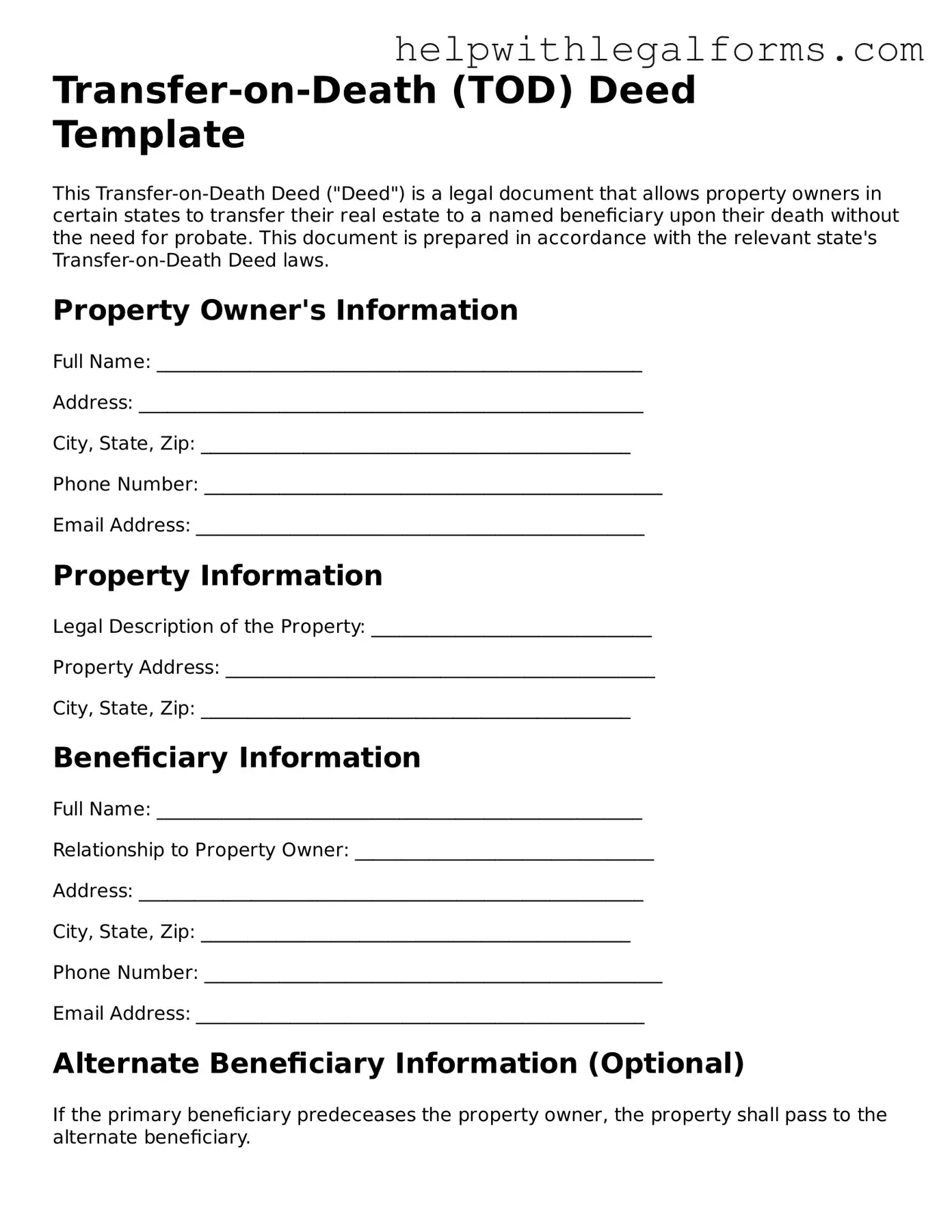Transfer-on-Death (TOD) Deed Template
This Transfer-on-Death Deed ("Deed") is a legal document that allows property owners in certain states to transfer their real estate to a named beneficiary upon their death without the need for probate. This document is prepared in accordance with the relevant state's Transfer-on-Death Deed laws.
Property Owner's Information
Full Name: ____________________________________________________
Address: ______________________________________________________
City, State, Zip: ______________________________________________
Phone Number: _________________________________________________
Email Address: ________________________________________________
Property Information
Legal Description of the Property: ______________________________
Property Address: ______________________________________________
City, State, Zip: ______________________________________________
Beneficiary Information
Full Name: ____________________________________________________
Relationship to Property Owner: ________________________________
Address: ______________________________________________________
City, State, Zip: ______________________________________________
Phone Number: _________________________________________________
Email Address: ________________________________________________
Alternate Beneficiary Information (Optional)
If the primary beneficiary predeceases the property owner, the property shall pass to the alternate beneficiary.
Full Name: ____________________________________________________
Relationship to Property Owner: ________________________________
Address: ______________________________________________________
City, State, Zip: ______________________________________________
Phone Number: _________________________________________________
Email Address: ________________________________________________
Terms and Conditions
This Deed is executed in accordance with the laws of the state where the property is located and is subject to the following terms and conditions:
- The property owner retains the right to use, sell, or mortgage the property during their lifetime without consent from the beneficiary.
- This Deed does not take effect until the death of the property owner.
- The property owner may revoke this Deed at any time prior to their death.
- The transfer of property through this Deed is subject to existing liens and encumbrances on the property.
Signatures
This Deed must be signed in the presence of a notary public and, depending on the state, may require witnesses.
Property Owner's Signature: ______________________________ Date: ____________
Notary Public's Signature: _______________________________ Date: ____________
Seal:
Recordation
For this Deed to be effective, it must be recorded with the county recorder's office in the county where the property is located before the property owner's death.
